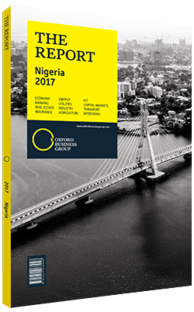Eguarekhide Longe, CEO, Aiico Pension: Interview

Interview: Eguarekhide Longe
What are the main challenges the sector has faced since the Pension Reform Act of 2014 (PRA 2014)?
EGUAREKHIDE LONGE: PRA 2014 replaced its predecessor, the Pension Reform Act of 2004, and essentially addressed the key issues of coverage, the contribution rates, and the impact of accumulated pension savings on the economy and society as a whole. On the issue of coverage, PRA 2014 introduced the mandatory application of the pension law in all 36 constituent states and 774 local government areas.
The intention of PRA 2014 was to increase the number of workers covered under the contributory pension system (CPS). In reality, expanding coverage has been very challenging, as it is difficult to enforce the adoption of the CPS within individual states and local government areas. Indeed, the stronger case for the adoption of the CPS by sub-national authorities came about largely due to the growing pension liabilities that were inherent in continuing to operate an unfunded defined benefit pension arrangement. Considerable arrears dating back several years are owed to most public servants in these states. Regarding the private sector, growth in the number of organisations that have adopted the CPS – a result of a reduction in the qualifying number of staff from a minimum of five to three – has not created a tangible impact.
How could an increase in the pension penetration rate be achieved over time?
LONGE: The informal sector in Nigeria constitutes, by conservative estimates, 70% of the workforce. This includes microbusinesses and much larger enterprises particularly in the arts and crafts sector, which, though informal in the nature of their business, are by no means micro in their earnings patterns.
The key to harvesting the potential of this broad workforce group is to design customised pension arrangements that conform to their earning and spending patterns, as the pension structure of the formal workforce would not be applied easily. Withdrawal rules from accumulated savings have also been highlighted as an area that would require customisation for informal sector workers, who often require on-demand access to their savings.
As part of its strategy, the pension industry is aiming to enrol 30m contributors and reach a fund total of N20trn ($70.7bn) by the year 2024 – with these targets being significantly predicated on growth in coverage in the informal sector of Nigeria’s economy.
What is the level of compliance with PRA 2014?
LONGE: The PRA 2014 made compliance with the CPS mandatory for both public and private sector workers. This has since initiated a dialogue concerning how and when these entities will comply with the CPS. Compliance is bound to become a more topical issue as the impact of the accumulated pension savings is felt by society, both as a catalyst for economic development and as financial benefits begin to have an impact on individual contributors to the new pension scheme.
The public sector at the federal level has achieved more than 90% compliance. This is due to a drive by the federal government at the launch of the CSP to lead by example and ensure its success. Delays in compliance have been experienced since December 2014, due to considerable financial dislocation experienced by the federal government, resulting from a drop in revenues from sale of crude oil – the mainstay of Nigeria’s public sector income. Since the second quarter of 2017, however, there have been significant improvements thanks to higher government revenues.
Levels of compliance at the sub-national level are much worse, with only seven of the 36 Nigerian states fully compliant and up to date with pension remittances for their workers’ retirement savings accounts. Most other states still operate defined benefit pay-asyou-go schemes, and a considerable backlog in payments needs addressing for this situation to change.
You have reached the limit of premium articles you can view for free.
Choose from the options below to purchase print or digital editions of our Reports. You can also purchase a website subscription giving you unlimited access to all of our Reports online for 12 months.
If you have already purchased this Report or have a website subscription, please login to continue.

